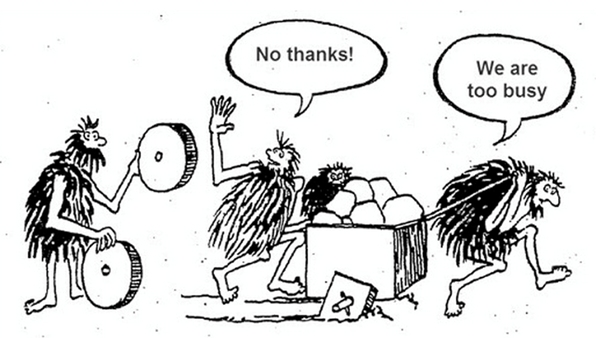Just like how we sometimes ignore household repairs because of lack of time or resources, companies often neglect their technical debt by postponing necessary updates or improvements. This can be due to competing priorities, resource constraints, or even pride in past makeshift solutions. However, just like with household repairs, neglecting technical debt can lead to bigger problems down the line.
Technical debt refers to the price organizations pay to maintain and upgrade their systems to meet changing demands. It is a result of the trade-off between taking shortcuts in order to move faster and deliver today and facing the consequences of those imperfect solutions tomorrow.
Perfect is the enemy of done. Technical debt is inevitable when you need to move fast. Developing the “perfect architecture” is time consuming and can restrain continuous development.
Let’s be clear: Every growing business has some level of technical debt. It’s not a matter of if technical debt will need to be addressed but when.
Shortcuts and non-scalable solutions in the development process can accumulate and they must be addressed to keep the codebase healthy and scalable.

Contrary to common perception, technical debt is not always negative, it’s a balance of trade offs. In the right amount, it can enable a business to grow rapidly by allowing them to quickly launch products, be first to market, or gain an edge without sacrificing the opportunity by striving for perfection.
That said, we’re not playing the devil’s advocate here. Excessive technical debt can obstruct progress. Companies must be vigilant because it isn’t without its issues:

Let’s dive into the process of Discovery, Priorities, Planning, and Operationalization.
The first step is to diagnose the organization’s debt. Essentially this means following a discovery process which involves asking a lot of questions (below are some examples of these questions)
Before embarking on any project, do your homework. Take the time to mount a quick discovery process. Ask yourself some questions:
Great Job! You’ve successfully classified and ordered your debt. You know what type of debt it is and how complex it is to solve. The next step is to prioritize it so you can design an action plan to manage it. The guiding question for this step is: Why should this technical debt be addressed now? Consider:
After classifying and prioritizing your technical debt, the next step is organization. This means creating a clear action plan with specific goals, timelines, and people responsible for each task. The key is to establish a process that works for your organization and ensures accountability to achieve the desired outcomes.
Fast-paced organizations that are scaling are the perfect breeding ground for technical debt. Sudden surges in user bases, frequent feature releases, and updates make it easy for debt to silently grow.
To keep your technical debt under control and prevent unexpected challenges, it is crucial to continuously follow the three-step process of Discover, Classify, and Prioritize. Technical debt management is essential for ensuring the growth and changing needs of your company are not hindered by accumulated debt.
Aside from implementing a continuous monitoring process, there are other ways of tackling or proactively managing technical debt. Evolving or Implementing a Modern Data Stack can help businesses with technical debt issues in several ways:
In summary, a modern data stack can assist companies in minimizing technical debt while moving through a fast development phase by enhancing data management, streamlining workflows, standardizing data formats, providing adaptable infrastructure, and allowing real-time data analysis.
Has your technical debt become overwhelming? Want to proactively tackle technical debt management before it becomes an issue? We’re here to help! Don’t take it from us, see how we helped ClassDojo with their technical debt implementing a Modern Data Stack:
As your on-demand expert data team, Mutt Data can help you crystallize your AI strategy through the design and implementation of technical capabilities and best practices. We study your company’s business goals to understand what has to change so we can help you accomplish it through a robust technical strategy with a clear roadmap and set of milestones. Talk to one of our sales reps at hi@muttdata.ai or check out our sales booklet and blog.
We’re active on Clutch! Read our reviews here. Or check out our success stories: